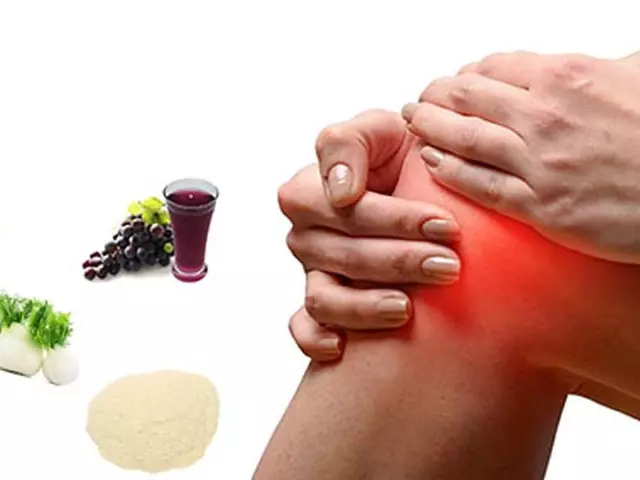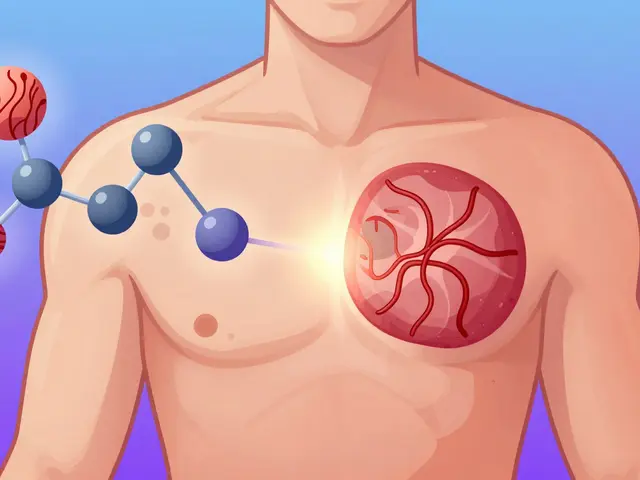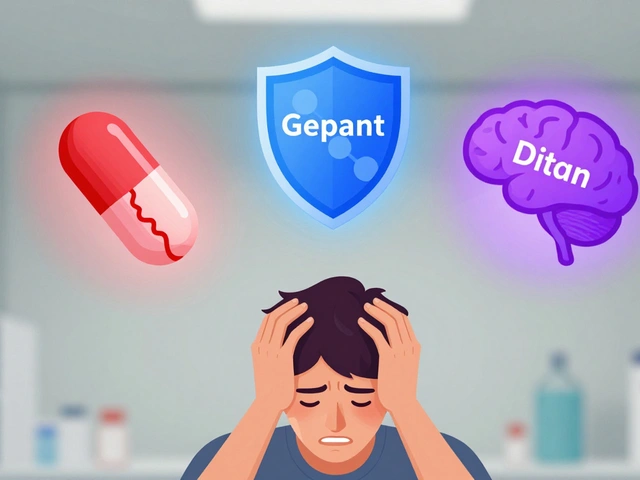TL;DR
- Frumil is a prescription medication used mainly for treating depression and anxiety.
- Typical adult dose starts at 20mg once daily, adjusted up to 60mg based on response.
- Common side effects include nausea, dry mouth, insomnia, and mild weight change.
- Never stop abruptly - taper under doctor supervision to avoid withdrawal.
- Report severe reactions (e.g., suicidal thoughts, rash, swelling) to a healthcare professional immediately.
What Is Frumil and When Is It Prescribed?
Frumil belongs to the class of selective serotonin‑norepinephrine reuptake inhibitors (SNRIs). It works by boosting two key neurotransmitters - serotonin and norepinephrine - that help regulate mood, pain perception, and stress response. Doctors usually prescribe it for:
- Major depressive disorder (MDD)
- Generalised anxiety disorder (GAD)
- Obsessive‑compulsive disorder (OCD) - off‑label in some regions
- Chronic neuropathic pain, when other options have failed
The drug is available in tablet form, most commonly in 20mg, 40mg and 60mg strengths. In the UK it is marketed under the brand name Frumil, but the generic name is venlafaxine extended‑release. Because it’s an extended‑release formulation, you take it once a day, preferably in the morning with food to minimise stomach upset.
How to Take Frumil: Dosage Guidelines and Practical Tips
Getting the dose right is crucial for both effectiveness and tolerability. Below is a step‑by‑step guide that reflects the current NICE recommendations (2024) and typical practice in UK primary care.
- Start low, go slow. Most clinicians begin with 20mg once daily for the first week.
- Monitor how you feel. If side effects are mild and mood hasn’t improved, increase to 40mg after 7‑10 days.
- Maximum recommended dose is 60mg per day. Some specialists may push to 120mg in treatment‑resistant cases, but that requires specialist oversight.
- Take the tablet whole - do not crush or chew. The extended‑release matrix will be damaged, leading to a rapid surge of the drug and possible nausea.
- Consistency matters. Try to take it at the same time each day to keep blood levels stable.
- If you miss a dose, take it as soon as you remember - unless it’s almost time for the next dose. In that case, skip the missed one; don’t double up.
- Never stop abruptly. Work with your prescriber to taper the dose over 2‑4 weeks, especially after more than six months of use.
Special populations need extra care:
- Elderly patients often start at 20mg and may stay at that dose because of slower metabolism.
- People with liver or kidney impairment may require dose reductions; your doctor will check blood tests.
- Pregnant or breastfeeding women should discuss risks versus benefits, as data are limited but suggest a small increase in congenital heart defects.

Safety Profile: Common and Rare Side Effects, Drug Interactions, and When to Seek Help
Like any psychotropic, Frumil isn’t risk‑free. Understanding the likely and serious reactions helps you stay ahead.
| Category | Side Effects | Incidence |
|---|---|---|
| Gastro‑intestinal | Nausea, dry mouth, constipation, loss of appetite | 10‑20% |
| Central nervous system | Insomnia, dizziness, headache, anxiety (initial) | 5‑15% |
| Cardiovascular | Increased blood pressure, palpitations | 2‑5% |
| Sexual function | Reduced libido, delayed ejaculation, anorgasmia | 3‑7% |
| Rare but serious | Serotonin syndrome, major bleeding (with anticoagulants), hyponatremia, suicidal thoughts | <1% |
Most side effects ease after the first two weeks as your body adjusts. Here are practical ways to minimise them:
- Take with food to reduce nausea.
- Stay hydrated - dry mouth often improves with water or sugar‑free gum.
- Limit caffeine if insomnia becomes an issue.
- Check your blood pressure after a month of therapy; your GP may need to adjust the dose.
Drug interactions matter a lot. Avoid combining Frumil with:
- Monoamine oxidase inhibitors (MAOIs) - needs a 14‑day washout.
- Other serotonergic agents (triptans, certain cough syrups) - raises serotonin syndrome risk.
- Strong CYP2D6 inhibitors (e.g., fluoxetine) - can increase Frumil levels.
- Non‑steroidal anti‑inflammatory drugs (NSAIDs) or anticoagulants - higher bleeding risk.
If any of these apply, tell your pharmacist. They can suggest alternative pain relief or adjust doses.
Red‑flag symptoms that require immediate medical attention include:
- Sudden mood worsening, suicidal thoughts, or aggressive behaviour.
- Rash, swelling, or difficulty breathing (possible allergic reaction).
- Severe dizziness, fainting, or chest pain.
- Unexplained bruising or bleeding.
Mini‑FAQ: The Questions Most People Ask About Frumil
Below are quick answers to the queries that typically appear on GP clinics and pharmacy counters.
- Is Frumil addictive?
- No, it isn’t classified as a controlled substance. However, stopping suddenly can cause withdrawal symptoms like irritability or flu‑like aches, so a taper is recommended.
- Can I drink alcohol while on Frumil?
- Occasional light drinking is usually tolerated, but heavy alcohol can worsen sedation, increase blood pressure, and heighten depression. Discuss your drinking habits with your doctor.
- How long before I feel the benefits?
- Most patients notice mood improvement after 2‑4 weeks, though full effect may take up to 8‑12 weeks. Patience is key; keep regular follow‑ups.
- Do I need regular blood tests?
- Baseline liver and kidney function tests are wise before starting. If you’re on a high dose or have cardiovascular risk, your doctor may check blood pressure and sodium levels after a month.
- Is Frumil safe for teenagers?
- It can be prescribed from age 18 upwards. For younger adolescents, clinicians prefer other antidepressants with more pediatric data.
- What should I do if I miss a dose?
- Take it as soon as you remember unless it’s almost time for the next dose - then skip it. Never double up.
These answers cover the most common concerns, but always bring up any personal health issues with your prescriber.

Next Steps: How to Get Started and What to Watch For
If you think Frumil might be right for you, here’s a short checklist to move forward:
- Schedule a face‑to‑face appointment with your GP or psychiatrist.
- Prepare a brief health history: current meds, allergies, blood pressure, liver/kidney status.
- Ask about the starting dose (usually 20mg) and the tapering plan for eventual discontinuation.
- Request a written medication plan that includes what to do if you miss a dose.
- Set a reminder to book a follow‑up after 2 weeks to discuss early side effects.
- Keep a daily mood journal - it helps you and your clinician gauge effectiveness.
Remember, medication works best when paired with supportive lifestyle habits: regular exercise, balanced diet, adequate sleep, and, if possible, psychotherapy. Combining approaches often accelerates recovery and reduces the chance of relapse.
Feel free to reach out to your local pharmacy for any clarification on dosing devices or potential interactions. The more informed you are, the smoother your journey with Frumil will be.







Chelsea Hackbarth
September 21, 2025 AT 00:18